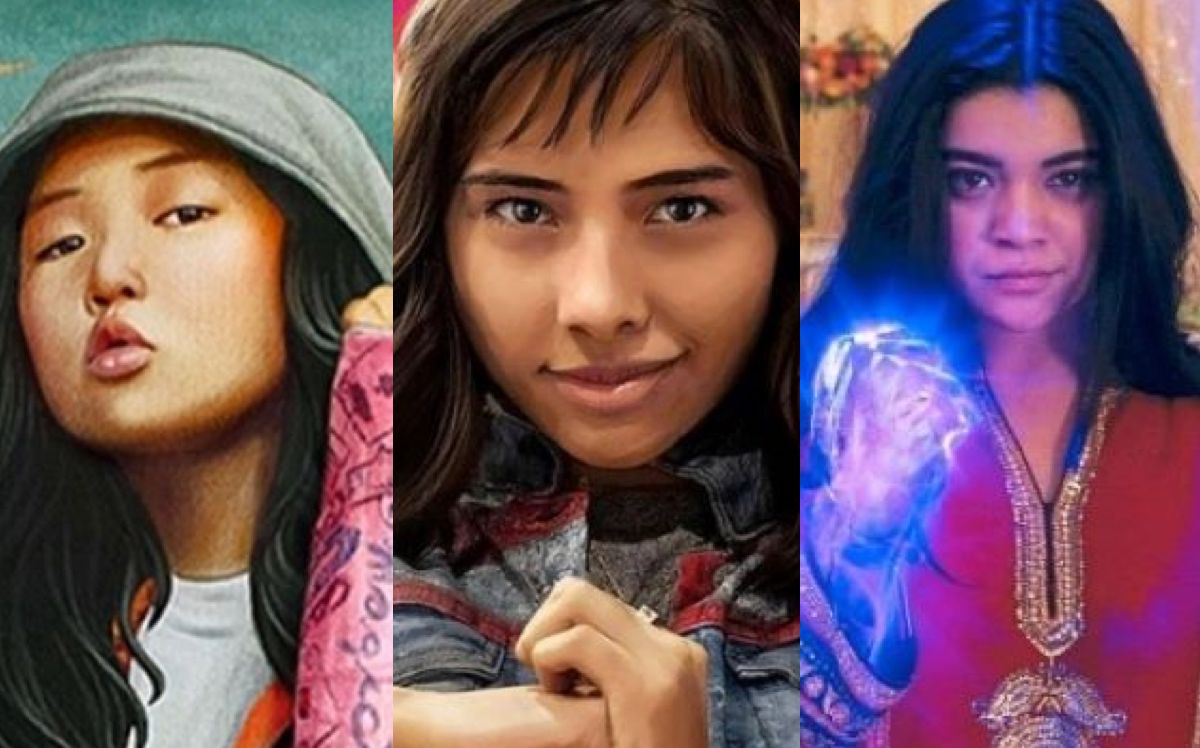What’s the Right (And Wrong) Way to Change Adapted Characters?
Is Ms. Marvel still marvelous if she can’t “embiggen”?

In a bunch of recent comic book movies, there’s been a rash of lesser-known comics characters being brought in to appeal to fans, only for their characterization to be completely different. This seems especially prominent with young female heroines being reduced to plot points in other people’s stories (Cassandra Cain in Harley Quinn and the Birds of Prey and America Chavez in Doctor Strange in the Multiverse of Madness), often to these characters’ detriment.
Let’s start with Harley Quinn and the Birds of Prey: the movie already took a wealth of liberties with the source material, taking out Barbara Gordon’s Oracle as one of the founding Birds of Prey members and replacing her with Harley Quinn and Renee Montoya. But the most egregious was the “adaptation” of Cassandra Cain; reducing Cassandra Cain to any other pickpocketing street rat not only took away the disability representation that came with the character (whose speech abilities can vary wildly from comic to comic due to her upbringing as an assassin raised to only understand body language), but it also made her far less compelling overall, just turning her into another child McGuffin for the villains to pursue and the “real” heroes to protect.
America Chavez was treated a little better, in that Doctor Strange in the Multiverse of Madness was essentially her origin story and at least kept her background fairly similar to the comics (being raised in Paradise by two mothers).
The problem is that, because of the story they wanted to tell, with her not having full control of her powers, she loses a lot of the self-assured, spitfire personality she has in the comics. It doesn’t even occur to her that her universe-jumping powers can be used to punch normal things until 2/3 of the way through the movie, which feels highly unrealistic considering she’s spent who knows how long running for her life.
It also didn’t help that, despite it being her origin story, the movie was still a Doctor Strange film, meaning he was the main focus. That, plus sharing the story with Scarlet Witch, means she had to fight for attention amongst two MCU powerhouses, as well as a sea of attention-grabbing cameos. Add that to the glaring omission of an important part of her character that fans really wanted to see Marvel embrace on the big screen, and it was hard not to be let down.
That’s why I was originally so cautious when I heard they were changing Kamala Khan’s powers for the Ms. Marvel Disney+ show. Thankfully, my worries were assuaged by the first episode of Ms. Marvel.
Kamala is still the spunky and hopeful girl from Jersey City, dealing with friends, bullies, and being torn between her family’s demands and her own independent personality. It helps that the changes to the story also focus her story on the dynamic between her culture and her fandom: Rather than sneaking out to go to a party as her parents fear, Kamala sneaks out to go to Avengers Con, which highlights her family’s opposition to her love of superheroes, who see Captain Marvel’s costume as “too tight fitting” and would rather have Kamala go dressed in a full-covering Hulk costume (ironically despite the fact that the Hulk wears less clothes than Captain Marvel).
The changes to Kamala’s origin story not only in a way that serves her as a character, but the medium her story is told in.
Instead of being a popular fanfic author, she’s a no-name fan art stop-motion animator, which shows not only her struggle to make a name for herself but also allows for the show to have a very unique art style to play with Kamala’s perspective on her world, a bit like the Tom Holland Spider-Man movie credits but carried throughout the show in colorful neon lights and background comic-style paintings. (They even use images straight from the comics for the ending credits!)
And it’s certainly more in line with her original characterization than some recent adaptations, like Ultimate Spiderman, which turned her into a very serious, professional character in order to contrast with Peter Parker. There’s also the unfortunate reality that some parts of Ms. Marvel would be near impossible to adapt to good effect, even if they had the CGI budget for her wide array of powers.
A group of dedicated fans created a near shot-for-shot remake of Kamala’s first comic, No Normal, to impressive effect. However, it highlighted some uncomfortable realities of adapting the comic into live-action, such as when the Pakistani American Kamala shapeshifts into the white, blonde Captain Marvel.
As Marvel Studios head Kevin Feige said in an interview when questioned on Kamala’s power change, “we adapt the comics; it’s not an exact translation.” And sometimes, things are better lost in translation, especially when being made by a production team that comes from the actual cultural background of the character. (I still want her to say “Embiggen!” at some point, tho.)
Have a tip we should know? tips@themarysue.com